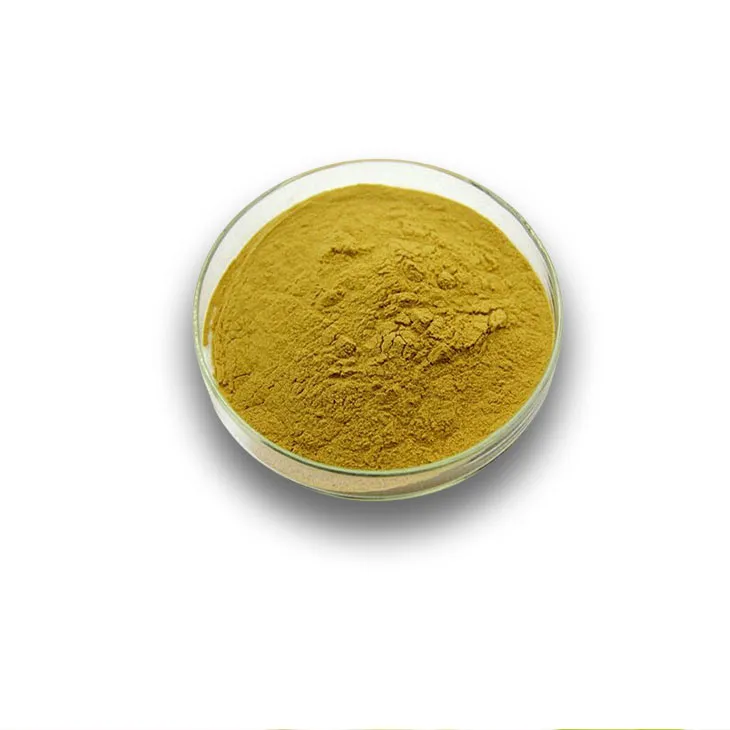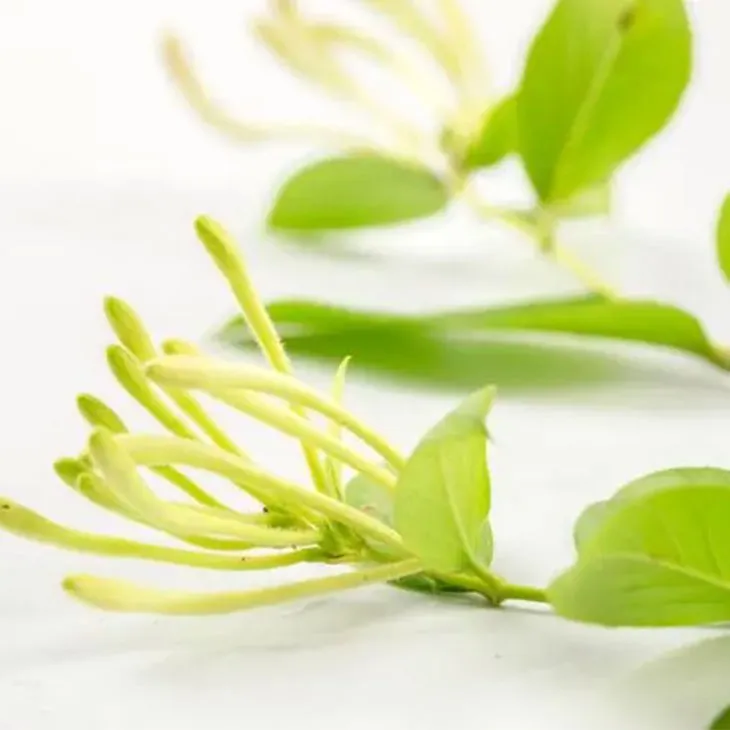- 0086-571-85302990
- sales@greenskybio.com
The best method for extracting honeysuckle pollen.
2024-11-29

1. Introduction
Honeysuckle is a well - known plant with various medicinal and ecological values. The pollen of honeysuckle is also rich in nutrients and has potential applications in many fields such as medicine, cosmetics, and food. Efficient extraction methods for Honeysuckle Pollen are crucial to ensure high - quality and high - yield products. This article will comprehensively explore the best methods for extracting Honeysuckle Pollen.

2. Understanding Honeysuckle Pollen
2.1. Structure and Characteristics
Honeysuckle pollen grains are relatively small in size. They typically have a unique outer shell structure which protects the internal components. The pollen is often yellowish - white in color. Its fine texture makes it easy to disperse in nature but also poses certain challenges during extraction.2.2. Nutritional and Medicinal Value
Honeysuckle pollen contains a variety of nutrients such as proteins, amino acids, vitamins, and minerals. Medicinally, it has been associated with anti - inflammatory, antibacterial, and antioxidant properties. This makes the extraction of pure and high - quality pollen even more important for its utilization in health - related products.
3. Traditional Extraction Methods
3.1. Manual Extraction
- Manually picking flowers: The first step in this method is to carefully pick honeysuckle flowers. This should be done at the appropriate time when the flowers are fully bloomed but the pollen is still intact. However, this process is time - consuming and labor - intensive.
- Sieving or shaking: After collecting the flowers, they can be placed on a fine - meshed sieve and gently shaken. The pollen will fall through the sieve due to its small size. Another option is to place the flowers in a container and shake them vigorously to dislodge the pollen. But this method may not be very efficient as a significant amount of pollen may remain adhered to the flower parts.
3.2. Air - Drying and Brushing
- Air - drying: Flowers are first spread out in a well - ventilated area and allowed to air - dry. This helps in loosening the pollen from the flower structures. However, it is important to control the drying time and conditions to prevent damage to the pollen.
- Brushing: Once the flowers are dried, a soft - bristled brush can be used to gently brush the pollen from the flower parts. This method requires a certain level of skill to ensure that the pollen is collected without being damaged or contaminated. But it also has limitations in terms of the amount of pollen that can be collected at one time.

4. Modern and Advanced Extraction Methods
4.1. Mechanical Extraction Devices
- Flower Crusher: There are specialized flower crushers designed for honeysuckle. These crushers can break the flower structures gently, releasing the pollen. The advantage of this method is that it can handle a relatively large amount of flowers at once, increasing the extraction efficiency. However, it is necessary to ensure that the crusher settings are appropriate to avoid over - crushing and damaging the pollen.
- Centrifugal Extractors: Centrifugal force can be used to separate the pollen from the flower debris. Flowers are placed in a centrifuge - like device, and when spun at a high speed, the pollen is forced to the outer part of the container where it can be collected. This method is relatively fast and can achieve a high degree of purity. But the initial investment in the equipment can be high.
4.2. Ultrasonic - Assisted Extraction
- Principle: Ultrasonic waves create microscopic bubbles in the extraction medium. These bubbles collapse violently, creating shock waves and micro - jets that can break the cell walls of the flower tissues and release the pollen more effectively. This method can significantly improve the extraction yield.
- Procedure: The honeysuckle flowers are placed in a suitable extraction solvent along with the ultrasonic device. The ultrasonic waves are applied for a specific period, usually a few minutes to half an hour depending on the amount of flowers and the power of the ultrasonic device. After that, the pollen - containing solution can be further processed to separate the pollen from the solvent.
4.3. Enzyme - Assisted Extraction
- Enzyme Selection: Specific enzymes such as cellulase and pectinase can be used. These enzymes break down the cell walls of the flower cells which are mainly composed of cellulose and pectin. By breaking down these components, the pollen is more easily released.
- Process: The flowers are mixed with the enzyme solution in a suitable container. The mixture is incubated at a specific temperature and pH for a certain period. After the enzymatic reaction is complete, the pollen can be separated from the solution through filtration or centrifugation.

5. Factors Affecting the Extraction
5.1. Flower Maturity
The maturity of honeysuckle flowers plays a crucial role in pollen extraction. Flowers that are too young may not have fully developed pollen, while overly mature flowers may have already released some of their pollen. Optimal flower maturity is when the flower is fully open but the anthers are still intact and full of pollen.5.2. Environmental Conditions
- Temperature: Temperature can affect the viability and release of pollen. High temperatures may cause the pollen to dry out and become less viable, while low temperatures may slow down the extraction process. An appropriate temperature range, usually around 20 - 25 °C, is preferred for extraction.
- Humidity: High humidity can make the flowers damp, which may lead to the growth of mold and affect the quality of the pollen. On the other hand, very low humidity can cause the pollen to become too dry and brittle. Maintaining a relative humidity of around 40 - 60% is beneficial for pollen extraction.
5.3. Extraction Solvents
- Type of Solvent: Different solvents can be used for pollen extraction. Water is a common solvent as it is safe and inexpensive. However, some organic solvents such as ethanol may also be used, especially when considering the extraction of certain active ingredients along with the pollen. The choice of solvent depends on the intended use of the pollen and the extraction requirements.
- Solvent Concentration: For solvents like ethanol, the concentration can affect the extraction efficiency. A too - high concentration may damage the pollen, while a too - low concentration may not be effective in releasing the pollen. Finding the optimal concentration is essential for a successful extraction.
6. Quality Control in Pollen Extraction
6.1. Purity Assessment
- Microscopic Examination: Using a microscope, the purity of the extracted pollen can be determined. This involves checking for the presence of other plant debris, insect parts, or contaminants. A pure sample should consist mainly of intact honeysuckle pollen grains.
- Chemical Analysis: Chemical methods can be used to analyze the composition of the pollen. This helps in ensuring that there are no harmful substances present and that the nutritional and active components are within the expected range.
6.2. Viability Testing
- Staining Methods: Certain dyes can be used to stain the pollen grains. Live pollen grains will take up the dye differently from dead ones, allowing for the determination of pollen viability. This is important for applications where viable pollen is required, such as in plant breeding.
- Germination Tests: In vitro germination tests can be carried out. The pollen is placed in a suitable medium and observed for germination. A high germination rate indicates good - quality, viable pollen.
7. Conclusion
There are various methods for extracting honeysuckle pollen, each with its own advantages and limitations. Traditional methods such as manual extraction are simple but often less efficient. Modern methods like mechanical extraction devices, ultrasonic - assisted extraction, and enzyme - assisted extraction offer higher yields and better quality control. However, factors such as flower maturity, environmental conditions, and extraction solvents need to be carefully considered during the extraction process. Quality control measures, including purity assessment and viability testing, are also essential to ensure the production of high - quality honeysuckle pollen. By understanding and optimizing these aspects, we can effectively extract honeysuckle pollen for its diverse applications in different industries.
FAQ:
Q1: Why is it important to extract honeysuckle pollen?
Extracting honeysuckle pollen is important for several reasons. Firstly, honeysuckle pollen can have potential health benefits. It may contain nutrients and bioactive compounds. Secondly, in the field of botany and research, extracting pollen helps in studying the reproductive biology of honeysuckle. It can also be used for breeding programs to develop new varieties with better characteristics.
Q2: What are the basic steps in the traditional method of extracting honeysuckle pollen?
The traditional method may involve several steps. First, select the appropriate honeysuckle flowers at the right stage of development. Then, carefully remove the stamens from the flowers. Next, dry the stamens gently to allow the pollen to be released. After that, use a fine - meshed sieve or similar tool to separate the pollen from other parts of the stamens.
Q3: Are there any modern techniques for extracting honeysuckle pollen?
Yes, there are modern techniques. One such technique is the use of mechanical devices specifically designed for pollen extraction. These devices can gently shake or vibrate the flowers or stamens to release the pollen more efficiently. Another modern approach may involve the use of mild air currents or suction systems to collect the released pollen in a controlled environment.
Q4: How can we ensure the quality of the extracted honeysuckle pollen?
To ensure the quality of the extracted pollen, start with high - quality source flowers. Avoid using flowers that are damaged or diseased. During the extraction process, maintain clean and hygienic conditions. Use proper drying techniques to prevent mold growth. Also, store the extracted pollen in appropriate containers, such as airtight and moisture - proof ones, at the right temperature to preserve its viability and quality.
Q5: What are the factors that can affect the yield of honeysuckle pollen extraction?
Several factors can affect the yield. The variety of honeysuckle plays a role, as some varieties may produce more pollen than others. The time of day and season of collection can also impact the yield. Flowers collected in the morning may have more pollen. Environmental conditions like temperature, humidity, and sunlight exposure during the growth of the plant can influence pollen production. Additionally, the extraction method itself, if not properly carried out, can reduce the yield.
Related literature
- Honeysuckle Pollen: Properties and Extraction Techniques"
- "Advanced Methods in Honeysuckle Pollen Harvesting"
- "Optimizing Honeysuckle Pollen Extraction for Research and Industrial Use"
- ▶ Hesperidin
- ▶ citrus bioflavonoids
- ▶ plant extract
- ▶ lycopene
- ▶ Diosmin
- ▶ Grape seed extract
- ▶ Sea buckthorn Juice Powder
- ▶ Beetroot powder
- ▶ Hops Extract
- ▶ Artichoke Extract
- ▶ Reishi mushroom extract
- ▶ Astaxanthin
- ▶ Green Tea Extract
- ▶ Curcumin Extract
- ▶ Horse Chestnut Extract
- ▶ Other Problems
- ▶ Boswellia Serrata Extract
- ▶ Resveratrol Extract
- ▶ Marigold Extract
- ▶ Grape Leaf Extract
- ▶ blog3
- ▶ blog4
-
Extraction process of stevia extract.
2024-11-29
-
Chinese Grape Seed Extract Powder Factory.
2024-11-29
-
Vitamin K2 in China vs. the United States.
2024-11-29
-
Nature's Bounty L - Arginine
2024-11-29
-
Bayberry Extract
2024-11-29
-
Yohimbine Bark Extract
2024-11-29
-
Resveratrol extract
2024-11-29
-
Scutellaria Extract
2024-11-29
-
Dan Shen Root Extract/Salvia Root Extract
2024-11-29
-
Yam Extract
2024-11-29
-
Phyllanthus Emblica Extract
2024-11-29
-
White mustard seed extract
2024-11-29
-
Chasteberry Extract
2024-11-29
-
melatonin extract
2024-11-29





















